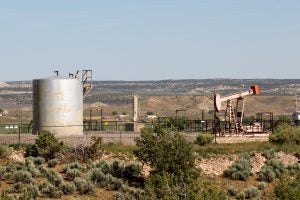 A new study from the Western Regional Air Partnership — a collaboration of state, tribal, and local air agencies, the Environmental Protection Agency, federal land managers, and other local stakeholders — finds methane emissions from New Mexico’s oil and gas facilities are higher than previous estimates and notes regulations could help address the problem.
A new study from the Western Regional Air Partnership — a collaboration of state, tribal, and local air agencies, the Environmental Protection Agency, federal land managers, and other local stakeholders — finds methane emissions from New Mexico’s oil and gas facilities are higher than previous estimates and notes regulations could help address the problem.
The research draws on data reported by states, tribes, and the oil and gas industry, and finds oil and gas companies emitted 816,980 tons of methane and smog-forming pollution in 2014 – significantly more than what the industry reported to the EPA.
Why so high?
Other peer-reviewed research across the country has shown us that official government inventories often do not accurately represent the full scale of emissions by not taking into account emissions from certain activities or sources, rapid changes in equipment operations, evolving practices by operators, and changes in production with oil and gas price swings.
[Tweet “New regional emissions study offers insights into New Mexico’s oil and gas emissions problems”]
To combat this problem, WRAP analyzed data from a variety of sources, including operator surveys in the San Juan Basin, previously published peer-reviewed scientific research, and emissions data reported to various entities.
Why it matters
Methane is a potent greenhouse gas responsible for about a quarter of current global warming, and research shows us the oil and gas sector is the largest industrial source of methane in the U.S.
It’s also the main ingredient of natural gas – making these emissions an energy waste problem in addition to a climate concern. Based on WRAP’s emissions study, EDF estimates that New Mexico companies are letting over $150 million worth of natural gas escape into the air each year, more than enough to meet the annual needs of every home in New Mexico. And the report does not include information about natural gas that is wasted through flaring, meaning the total value of the gas companies are wasting is even larger, and in line with estimates EDF released last fall.
A silver lining?
While this analysis makes it clear New Mexico’s methane pollution is drastically higher than previous estimates, it does offers solutions for driving down pollution. The study projects that over the next decade, New Mexico’s emissions could decline as a result of federal rules that require companies to reduce emissions.
The challenge for New Mexico is the federal emissions standards are in danger of being repealed by the Trump Administration. In 2016, the Environmental Protection Agency and Bureau of Land Management issued new policies requiring operators to regularly check their facilities for leaky equipment and other mechanical problems that lead to high emissions. However, due to pressure from some of the worst operators in the oil and gas industry, the Trump Administration is trying to roll back these commonsense protections. A proposal to rescind the BLM rule is currently out for public comment and EPA has reported they are reconsidering their standards as well.
This new analysis of industry emissions data underscores the important role regulations can play in reducing methane. If New Mexico is going to achieve meaningful pollution reductions, it will require the efforts of state and federal regulators to prevent methane waste and protect air quality in New Mexico.









